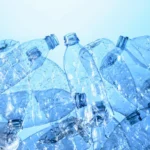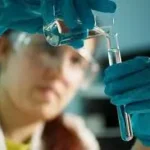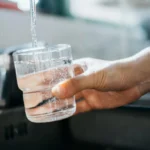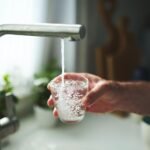Based on public studies and reports, we reveal the common contaminants that could be flowing from your tap—from PFAS to lead.
Every day, millions of New Jersey residents trust the water that flows from their taps. The assumption is that it’s safe. And while the state does have some of the strictest drinking water regulations in the U.S., those rules exist for a reason: New Jersey faces unique water challenges due to its dense population and long industrial history.
So, what’s really hiding behind the apparent clarity of a glass of water? Drawing on data from the Environmental Protection Agency (EPA), the New Jersey Department of Environmental Protection (NJDEP), and research groups like the Environmental Working Group (EWG), here is what the science tells us./
1. PFAS: The “Forever Chemicals”
- What are they? Per- and polyfluoroalkyl substances (PFAS) are a group of man-made chemicals used in products like Teflon pans, fast-food packaging, and firefighting foam. They are called “forever chemicals” because they don’t break down in the environment or the human body.
- The New Jersey Situation: According to multiple studies, New Jersey has some of the most widespread PFAS contamination in the nation. The NJDEP has confirmed the presence of these chemicals in hundreds of public water systems and private wells. In fact, the state has set its own aggressive legal limits (MCLs) for PFOA and PFOS, recognizing the severity of the problem.
- Health Risks: Long-term exposure has been linked to high cholesterol, immune system effects, thyroid issues, and an increased risk of certain cancers.
2. Chlorine and its Byproducts (DBPs)
- What is it? Chlorine is the most common disinfectant used by water treatment plants to kill dangerous bacteria and viruses. Its presence is, in fact, a safety measure.
- The Downside: The problem isn’t just the “pool” taste and smell. When chlorine reacts with natural organic matter in the water, it can form Disinfection Byproducts (DBPs), such as Trihalomethanes (THMs).
- Health Risks: The EPA regulates DBPs because long-term exposure to high levels has been associated with an increased risk of bladder cancer and reproductive problems.
3. Nitrates
- What are they? Nitrates are compounds commonly found in fertilizers, manure, and waste from septic systems. They enter the water supply through agricultural runoff and soil seepage.
- The New Jersey Situation: Areas with high agricultural activity or a reliance on septic wells may show higher levels of nitrates.
- Health Risks: The greatest risk is to infants. High nitrate levels can cause “blue baby syndrome” (methemoglobinemia), a serious condition that reduces the blood’s ability to carry oxygen.
4. Lead (Pb)
- What is it? Unlike other contaminants, lead typically leaches into water from old, corroding pipes, solder, and fixtures. The problem isn’t the water source, but the aging infrastructure that delivers it to your home.
- The New Jersey Situation: The water crisis in Newark brought this issue to the forefront, but many older homes and cities across the state face similar risks from lead service lines.
- Health Risks: There is no safe level of lead. In children, exposure can lead to severe developmental issues, learning disabilities, and behavioral problems.
5. Fluoride
- What is it? Unlike the others on this list, fluoride is often intentionally added to public water supplies in a process called community fluoridation to prevent tooth decay.
- The Controversy: While public health agencies endorse fluoridation, some consumers prefer to remove added fluoride from their water by personal choice, citing concerns about overexposure.
Take Control of Your Water Quality
Municipal treatment is the first line of defense, but it can’t eliminate 100% of every contaminant, nor can it control the water’s quality once it leaves the plant and travels through miles of pipes to your home.
The only way to truly guarantee the safety and purity of the water your family drinks is with a point-of-use purification system. Systems like Reverse Osmosis are extremely effective at removing PFAS, nitrates, lead, and fluoride, while Activated Carbon filters can significantly reduce chlorine and its byproducts.
The first step is knowledge. Before you can treat your water, you need to know exactly what you’re up against.
Call to Action (CTA): Worried about what might be in your water? Schedule a free, professional water analysis today. Our team will use advanced technology to give you a clear picture of your water quality and provide the peace of mind your family deserves.








